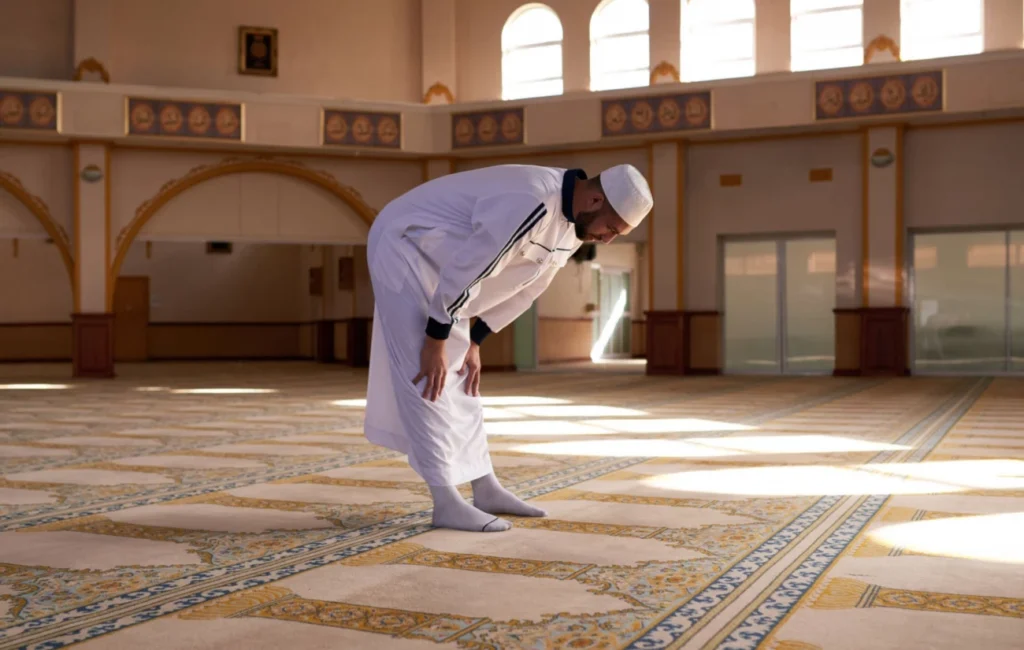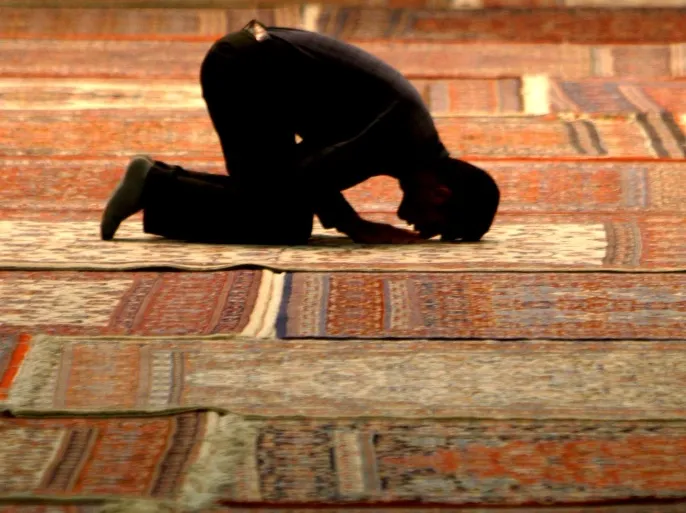Obligatory Acts of Prayer in Islam: A Comprehensive Guide
Contents
Prayer (Salat) is one of the five pillars of Islam and a fundamental act of worship for Muslims. To ensure the validity of prayer, certain actions are obligatory (Wajib) and must be performed correctly. These obligatory acts are divided into two categories: pillars (rukun) and non-pillar obligatory acts. This article provides a comprehensive guide to the obligatory acts of prayer in Islam, explaining their details and rulings.
The obligatory acts of prayer (Wajib) are the essential actions that must be performed for the prayer to be valid. These acts consist of 11 components, categorized into two types: pillars (rukun) and non-pillar obligatory acts. The significance of these essential actions lies in the fact that intentionally omitting any of these 11 components invalidates the prayer. However, there is a distinction between pillar and non-pillar obligatory acts, which we will elaborate on further in this article. In this article, we aim to delve into the topic of obligatory acts of prayer, their rulings, and details. Join us as we explore this fundamental aspect of Islamic worship.
The Eleven Obligatory Acts of Prayer:
- Niyyah (Intention): The mental intention to perform a specific prayer.
- Takbiratul-Ihram (Opening Takbir): Saying “Allahu Akbar” to commence the prayer.
- Qiyam (Standing): Standing upright during specific parts of the prayer.
- Qira’ah (Recitation): Reciting Surah Al-Fatiha and another Surah or verses from the Quran.
- Ruku’ (Bowing): Bowing with hands on knees.
- Sujud (Prostration): Prostrating with forehead, nose, hands, knees, and toes touching the ground.
- Dhikr (Remembrance): Reciting specific phrases glorifying Allah in Ruku’ and Sujud.
- Tashahhud (Attestation): Reciting the testimony of faith while sitting.
- Salam (Salutation): Saying “Assalamu Alaikum Wa Rahmatullah” to conclude the prayer.
- Tartib (Order): Performing the obligatory acts in the prescribed sequence.
- Muwalah (Continuity): Performing the actions without unnecessary pauses or interruptions.
To perform the prayer correctly, the person praying is obligated to carry out the obligatory acts of prayer accurately. This is because the validity and acceptance of the prayer depend on the proper execution of these obligatory acts. Moreover, five of these acts are considered pillars (rukun) of the prayer, meaning that even the slightest mistake (whether intentional or unintentional) in them invalidates the prayer.
Pillars (Rukun) vs. Non-Pillar Obligatory Acts:
Five of the obligatory acts are considered pillars of prayer: Niyyah, Takbiratul-Ihram, Qiyam, Ruku’, and Sujud. If any of these are omitted, performed incorrectly, or done out of order, even unintentionally, the prayer becomes invalid. Non-pillar obligatory acts, on the other hand, only invalidate the prayer if omitted or performed incorrectly intentionally. Unintentional mistakes in these acts do not nullify the prayer.
Details of the Pillars (Rukun):
- Niyyah (Intention):
- It is the mental intention to perform a specific prayer for the sake of Allah.
- It is not necessary to utter the intention verbally.
- The intention must be for the correct prayer (e.g., Fajr, Dhuhr, Asr).
- Takbiratul-Ihram (Opening Takbir): Saying “Allahu Akbar” while standing upright marks the beginning of the prayer.
- Qiyam (Standing): Standing upright is required during the opening Takbir, recitation, and before and after Ruku’.
- Ruku’ (Bowing): Bowing with hands on knees and back straight.
- Sujud (Prostration): Prostrating with seven parts of the body (forehead, nose, both hands, both knees, and toes of both feet) touching the ground.
Niyyah (Intention):
Changing the Intention (Adul):
In certain situations, it is permissible or even obligatory to change the intention during prayer.
- Obligatory Cases:
- Changing from Asr prayer to Dhuhr prayer before the designated time for Asr if one realizes they missed Dhuhr.
- Changing from Isha’ prayer to Maghrib prayer before the designated time for Isha’ if one realizes they missed Maghrib.
- Changing the intention when praying two missed prayers with a specific order (e.g., Dhuhr and Asr).
- Recommended Cases:
- Changing from a regular prayer to a missed prayer (Qada).
- Changing from an individual prayer to a congregational prayer.
- Changing from a regular prayer to a voluntary prayer (Nafl) in specific circumstances.
Takbiratul-Ihram: Initiating the Prayer
After making the intention (Niyyah), the prayer begins with the recitation of Takbiratul-Ihram, which is saying “Allahu Akbar” while raising the hands to the ears and then lowering them. This act signifies entering into a state of worship and abstaining from worldly actions such as eating, drinking, and talking.
Importance and Rulings:
- Takbiratul-Ihram is one of the pillars (rukun) of prayer. Omitting it, whether intentionally or unintentionally, invalidates the prayer.
- Repeating Takbiratul-Ihram after starting the prayer, even if unintentional, also invalidates the prayer.
Obligatory Aspects of Takbiratul-Ihram:
- Audible Recitation: The Takbir must be recited audibly, ensuring the person praying can hear themselves unless there is an impediment like hearing difficulty or excessive noise.
- Stillness: The body should be still while reciting Takbiratul-Ihram. Intentional movement during the recitation invalidates the prayer.
- Correct Pronunciation: The Takbir must be pronounced correctly in Arabic. Saying its translation or mispronouncing it renders it invalid.
- Learning the Correct Pronunciation: If someone is unsure about the correct pronunciation, they are obligated to learn it. If learning is not possible, they may say the translation as a last resort.
Doubt in Takbiratul-Ihram:
- Doubt about Recitation: If unsure whether they have recited Takbiratul-Ihram:
- If they have already started reciting Quranic verses, they should continue the prayer without repeating the Takbir.
- If they haven’t started reciting, they should recite Takbiratul-Ihram.
- Doubt about Correctness: If unsure whether they recited it correctly, they should ignore the doubt and continue the prayer.
Qiyam: Standing in Prayer
Qiyam refers to standing upright without support during prayer. It is an essential part of the prayer for those who are physically able. However, there are exceptions and specific rulings for those with limitations.
Instances of Qiyam in Prayer:
There are four instances of Qiyam in prayer:
- During Takbiratul-Ihram: Standing while reciting “Allahu Akbar” at the beginning of the prayer.
- After Recitation: Standing after reciting Surah Al-Fatiha and another Surah or verses from the Quran.
- After Ruku’: Standing after bowing (Ruku’).
- Before Ruku’: Standing before bowing (Ruku’).
The first and fourth instances are considered pillars (rukun) of prayer. Omitting them, even unintentionally, invalidates the prayer. The second and third instances are non-pillar obligatory acts, and unintentional omission does not invalidate the prayer.
Important Note: Those who are capable of standing for prayer and have no excuse, illness, or weakness are obligated to stand from the beginning of the prayer until bowing (Ruku’) and also after Ruku’ before prostrating (Sujud). Intentionally omitting standing in these parts invalidates the prayer.
Rulings Related to Qiyam:
- Obligation to Stand: Those who are physically able are obligated to stand from the beginning of the prayer until Ruku’ and after Ruku’ before prostrating (Sujud). Intentional omission of standing in these instances invalidates the prayer.
- Praying While Sitting: Those unable to stand can pray while sitting. If they can stand with support, they should do so.
- Praying While Lying Down: Those unable to sit can pray while lying down. They should lie on their right side facing the Qiblah if possible. If not, they can lie on their left side or back, with their feet towards the Qiblah.
- Transitioning Between Postures: If someone praying while sitting becomes able to stand, they should stand before performing Ruku’. Similarly, those praying while lying down should transition to sitting or standing if possible.
- Fear of Harm: If standing causes fear of illness or harm, one can pray while sitting or lying down.
- Praying at the Beginning of the Prayer Time: If someone anticipates being able to stand later in the prayer time, they should wait and pray while standing. If they pray sitting at the beginning and remain unable to stand, their prayer is valid.
- Praying at the End of the Prayer Time: If someone is unable to stand at the beginning of the prayer time and prays sitting but later becomes able to stand, they should repeat the prayer standing.
Ruku’: Bowing in Prayer
Ruku’ involves bowing after the recitation, bending until the fingertips reach the knees, and reciting specific phrases glorifying Allah. It is one of the pillars (rukun) of prayer and must be performed in every Rak’ah (unit) of obligatory and voluntary prayers, except for Salat al-Ayat, which has five Ruku’ in each Rak’ah.
Obligatory Aspects of Ruku’:
- Position: Bowing must be done before prostration (Sujud) in every Rak’ah.
- Depth: The body should be bent until the fingertips reach the knees. Some scholars also require placing the hands on the knees.
- Stillness: The body should be still while reciting the Dhikr (remembrance phrases).
- Dhikr: The specific Dhikr for Ruku’ is “Subhana Rabbiyal Adheem Wa Bihamdih” (Glory be to my Lord, the Most Great, and with His praise). Alternatively, “Subhanallah” can be recited three times.
- Correct Pronunciation: The Dhikr must be recited correctly in Arabic.
Intentional omission of stillness during the Dhikr invalidates the prayer. If omitted unintentionally, it should be repeated while still in the Ruku’ position.
Recommended Acts in Ruku’:
- Reciting “Allahu Akbar” before bowing and “Sami Allahu Liman Hamidah” after rising from Ruku’.
- Placing the hands on the knees with fingers spread.
- Placing the right hand on the right knee before the left hand on the left knee.
- Straightening the back and aligning the neck with the spine.
- Keeping the knees parallel to each other.
- Spacing the feet about a handspan apart.
- Opening the arms like outstretched wings for men (not for women).
- Repeating the Dhikr an odd number of times.
- Reciting Salawat (blessings upon the Prophet Muhammad and his family) before or after the Dhikr.

Sujud: Prostration in Prayer
Sujud is another pillar (rukun) of prayer, and two prostrations together constitute one pillar. It is obligatory to perform both prostrations in every Rak’ah. Any omission, addition, or alteration, whether intentional or unintentional, invalidates the obligatory prayer, requiring its repetition. However, in voluntary prayers, unintentionally missing both prostrations does not invalidate the prayer.
Performing Sujud:
After Ruku’ and standing up, the person praying performs Sujud by placing seven parts of the body on the ground: the forehead, both palms, both knees, and the toes of both feet. The Dhikr for Sujud is “Subhana Rabbiyal A’la Wa Bihamdih” (Glory be to my Lord, the Most High, and with His praise) or “Subhanallah” recited three times. After reciting the Dhikr, the person raises their head, pauses until still, and then returns to the Sujud position, reciting the Dhikr again. Finally, they raise their head and sit to continue the prayer.
Obligatory Aspects of Sujud:
- Placement of Limbs: All seven limbs (forehead, both palms, both knees, and toes of both feet) must touch the ground during Sujud.
- Stillness: The Dhikr (remembrance phrases) must be recited while the body is still.
- Rising and Sitting: Rising from the first Sujud and sitting with stillness is obligatory. Intentional omission invalidates the prayer.
- Number of Sujud: Intentionally increasing or decreasing the number of Sujud invalidates the prayer. Unintentionally missing a Sujud requires performing it before Ruku’ in the next Rak’ah or after Salam with two Sujud Sahw (prostrations of forgetfulness).
Recommended Acts in Sujud:
- Reciting “Allahu Akbar” when going from Ruku’ to Sujud, after rising from Sujud, and when going for the second Sujud.
- Men placing their hands first and women placing their knees first on the ground when going from Ruku’ to Sujud.
- Placing the nose on the ground.
- Looking at the tip of the nose during Sujud.
- Keeping the fingers together and facing the Qiblah, except for the thumbs.
- Repeating the Dhikr an odd number of times and reciting Salawat (blessings upon the Prophet Muhammad and his family).
- Sitting in the Tawarek position (sitting on the left thigh with the right foot on top of the left foot) after Sujud.
- Reciting “Astaghfirullah” (I seek forgiveness from Allah) between the two Sujud.
- Men opening their elbows like outstretched wings and women keeping their elbows close to their sides.
- Placing the hands on the thighs while sitting.
- Raising the knees before lifting the hands when rising from Sujud.
Undesirable Actions in Sujud:
- Reciting Quran during Sujud.
- Blowing on the place of Sujud to remove dust (if two letters are intentionally uttered, it invalidates the prayer).
- Leaving the hands on the ground between the two Sujud and going to the second Sujud without lifting them (unless it does not conflict with sitting between the two Sujud)

Non-Pillar Obligatory Acts of Prayer
Besides the pillars (rukun), several other actions are obligatory (Wajib) for the validity of prayer. These are:
- Qira’ah (Recitation):
- Reciting Surah Al-Fatiha and a complete Surah in the first and second Rak’ah.
- Reciting Surah Al-Fatiha or Tasbihat Arba’ah (four phrases glorifying Allah) in the third and fourth Rak’ah.
- Dhikr (Remembrance): Reciting specific phrases glorifying Allah in Ruku’ and Sujud.
- Tashahhud (Attestation): Reciting the testimony of faith while sitting.
- Salam (Salutation): Saying “Assalamu Alaikum Wa Rahmatullah” to conclude the prayer.
- Tartib (Order): Performing the obligatory acts in the prescribed sequence.
- Muwalah (Continuity): Performing the actions without unnecessary pauses or interruptions.
Qira’ah (Recitation)
Obligatory Aspects:
- Complete Surah: Reciting a complete Surah after Surah Al-Fatiha in the first and second Rak’ah of obligatory prayers.
- Surah Al-Fatiha or Tasbihat: Reciting Surah Al-Fatiha or Tasbihat Arba’ah in the third and fourth Rak’ah.
Rulings:
- Short Surahs: Surah Al-Fil and Surah Quraysh are considered one Surah, as are Surah Ad-Dhuha and Surah Al-Inshirah.
- Order of Recitation: Reciting the Surah before Surah Al-Fatiha requires repeating the Surah after Al-Fatiha.
- Additional Recitation: Reciting additional verses after the obligatory recitation is permissible.
- Prostration Surahs: Reciting Surahs containing verses of prostration requires performing the prostration if the verse is reached.
- Time Constraints: If time is limited, the Surah can be omitted.
- Forgetfulness: Forgetting Surah Al-Fatiha or the Surah does not invalidate the prayer if realized after Ruku’.
- Changing Surahs: Changing Surahs after starting is permissible if less than half of the Surah has been recited (except for Surah Al-Ikhlas and Surah Al-Kafirun).
- Voluntary Prayers: Reciting a Surah is not obligatory in voluntary prayers.
- Tasbihat Arba’ah: Reciting Tasbihat Arba’ah once in the third and fourth Rak’ah is sufficient, but reciting it three times is recommended.
Obligatory Aspects of Recitation:
- Audible Recitation: The recitation must be audible to the person praying unless there is an impediment.
- Correct Pronunciation: The recitation must be correct and without mistakes.
- Stillness: The body should be still during recitation.
Recommended Acts in Recitation:
- Reciting “A’udhu Billahi Minash Shaytanir Rajim” before Surah Al-Fatiha.
- Reciting “Bismillahir Rahmanir Rahim” aloud in the first and second Rak’ah of Dhuhr and Asr prayers.
- Reciting clearly and pausing at the end of each verse.
- Reflecting on the meanings of the verses.
- Reciting “Alhamdulillah Rabbil Alamin” after Surah Al-Fatiha.
- Repeating “Kadhalika Allahu Rabbi” one to three times after Surah Al-Ikhlas.
- Pausing briefly after Surah Al-Fatiha and the Surah.
- Reciting “Astaghfirullah Rabbi Wa Atubu Ilayh” or “Allahummaghfirli” after Tasbihat Arba’ah.
Undesirable Actions in Recitation:
- Not reciting Surah Al-Ikhlas in any obligatory prayer in a day.
- Reciting the same Surah in both Rak’ah of a prayer (except for Surah Al-Ikhlas).
Dhikr: Remembrance of Allah in Prayer
Dhikr encompasses any phrase that signifies the remembrance of Allah, such as “Allahu Akbar” (Allah is the Greatest), “Alhamdulillah” (Praise be to Allah), and “Subhanallah” (Glory be to Allah). Sending blessings upon Prophet Muhammad (Salawat) is also considered one of the best forms of Dhikr. Specific Dhikr are prescribed for Ruku’ and Sujud, each with its own rulings and etiquette.
Obligatory Aspects of Dhikr:
- Audible Recitation: The Dhikr must be recited audibly, ensuring the person praying can hear themselves unless there is a hearing impairment or excessive noise.
- Correct Pronunciation: All obligatory Dhikr must be recited correctly in Arabic. If someone doesn’t know the correct pronunciation, they are obligated to learn it.
- Stillness: All Dhikr, whether obligatory or recommended, must be recited while the body is still. Moving slightly forward, backward, or sideways necessitates pausing the Dhikr. However, reciting Dhikr with the general intention of remembrance while moving is permissible.
Tashahhud: Attestation of Faith
Tashahhud is another obligatory act in prayer, recited in the second Rak’ah of all obligatory and voluntary prayers, as well as in the third Rak’ah of Maghrib prayer and the fourth Rak’ah of Dhuhr, Asr, and Isha’ prayers. After rising from the second Sujud, the person praying sits and recites the Tashahhud after their body becomes still.
Recitation:
The obligatory Dhikr of Tashahhud is:
“Ashhadu an la ilaha illallahu wahdahu la sharika lahu, wa ashhadu anna Muhammadan abduhu wa rasuluh. Allahumma salli ala Muhammadin wa ali Muhammad.”
(I bear witness that there is no god but Allah, alone, without any partner, and I bear witness that Muhammad is His servant and messenger. O Allah, send blessings upon Muhammad and the family of Muhammad.)
Rulings:
- Omitting Tashahhud: If someone stands for the third Rak’ah but remembers omitting Tashahhud before Ruku’, they must sit and recite it, then stand again and continue the prayer.
- Remembering After Ruku’: If someone remembers omitting Tashahhud after Ruku’ in the third Rak’ah, they should complete the prayer and perform two Sujud Sahw after Salam. It is recommended to recite the missed Tashahhud before Sujud Sahw.
Recommended Acts:
- Reciting “Alhamdulillah” or “Bismillahi wa billahi walhamdulillahi wa khayru al-asma’i lillah” before the Tashahhud.
- Reciting “Wa taqabbal shafa’atahu warfa’ darajatah” after the Salawat.

Salam: Concluding the Prayer
Salam is the final obligatory act that concludes the prayer. It is recited after Tashahhud in the last Rak’ah.
Recitation:
The obligatory Salam is:
Assalamu alaikum” (Peace be upon you).
It is recommended to add “Wa rahmatullahi wa barakatuhu” (and the mercy of Allah and His blessings) or to say:
“Assalamu alaina wa ala ibadillahis salihin” (Peace be upon us and upon the righteous servants of Allah).
Recommended Salutations:
It is also recommended to recite the following salutations:
- Assalamu alaika ayyuhan nabiyyu wa rahmatullahi wa barakatuhu” (Peace be upon you, O Prophet, and the mercy of Allah and His blessings).
- “Assalamu alaina wa ala ibadillahis salihin” (Peace be upon us and upon the righteous servants of Allah).
- “Assalamu alaikum wa rahmatullahi wa barakatuhu” (Peace be upon you and the mercy of Allah and His blessings).
Note: The first and second parts of the Salam are recommended. Reciting the third part fulfills the obligatory aspect of the Salam. However, reciting all three parts is highly recommended, and it is best to say these Dhikr in their entirety.
Important: If someone forgets the Salam and remembers before the form of the prayer is disrupted or any invalidating action is performed, such as turning away from the Qiblah, they should recite the Salam, and their Salah remains valid.
Tartib: Order of Actions
Maintaining the prescribed order of actions in prayer is obligatory. Intention precedes Takbiratul-Ihram, which precedes recitation, and so on. Intentionally changing this order, such as performing Sujud before Ruku’, invalidates the prayer.
Rulings:
- Pillar before Pillar: Unintentionally performing a pillar before another pillar invalidates the prayer.
- Non-Pillar before Pillar: Unintentionally performing a non-pillar obligatory act before a pillar requires performing the pillar first and then repeating the non-pillar act.
- Pillar before Non-Pillar: Unintentionally performing a pillar before a non-pillar obligatory act does not invalidate the prayer.
- Non-Pillar before Non-Pillar: Unintentionally performing a non-pillar obligatory act before another requires correcting the order by performing the missed act and then repeating the one performed earlier.
Muwalah: Continuity
Muwalah refers to performing the actions of prayer continuously without excessive pauses or interruptions. Introducing a delay that makes an observer think the person has stopped praying invalidates the prayer.
It is obligatory for the person praying to perform the actions of prayer, such as bowing (Ruku’), prostration (Sujud), and the Tashahhud, with Muwalah, meaning continuously and without undue delay. Therefore, if there is a pause between the actions to the extent that an observer would assume the person has stopped praying, the prayer becomes invalid and must be repeated.

